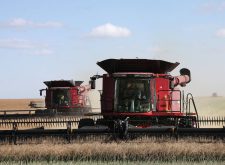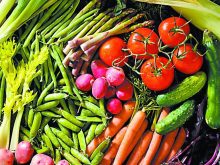Prairie farmers are going to have to adapt to climate change because they are going to face more of it than most of the rest of the world.
However, they should also look at the coming rise in temperatures as an opportunity to play a more vital role in feeding the world of 2050, says a University of Winnipeg climate researcher.
“There’s a very good argument that the Canadian Prairies will actually be an important generator of food for the world, more than it already is, because a lot of other areas are going to be experiencing extreme heat and other conditions,” said Ian Mauro, a geography professor who is part of the Prairie Climate Centre in Winnipeg.
Read Also

Farming Smarter receives financial boost from Alberta government for potato research
Farming Smarter near Lethbridge got a boost to its research equipment, thanks to the Alberta government’s increase in funding for research associations.
“This stuff is risky, but we can be resilient.”
Mauro told farmers at Keystone Agricultural Producers’ annual meeting Jan. 25 that the Canadian Prairies will see even more extreme temperature increases than the world average because they are located in the centre of a continent and not moderated by oceans. Instead of the 2C average increase in temperatures forecast for the planet, the Prairies will see 3.4 C, according to forecasting models.
That will have many impacts. Beyond just the average increase, it will also produce many more days of scorching temperatures, Mauro said.
There are now only 10 to 11 days of higher than 30 C per year, but this could increase to 50 to 54 by 2050-80.
“We’re going to jump to almost two months of plus-30,” he said.
That will be bad for many crops and cropping systems, but farmers need to learn to adapt so that they can take advantage of opportunities that might arise.
“Other varieties coming in, getting ahead of the curve, being ready for it,” is what farmers should focus on, Mauro said.
“There are opportunities here, and farmers here know how to maximize opportunities.”
However, whether farmers face problems or opportunities, they need to start thinking about how they are going to adapt because major changes are coming.
“We’re going to see more warming,” said Mauro.
“We will actually be hotter here (than elsewhere), faster.”


















